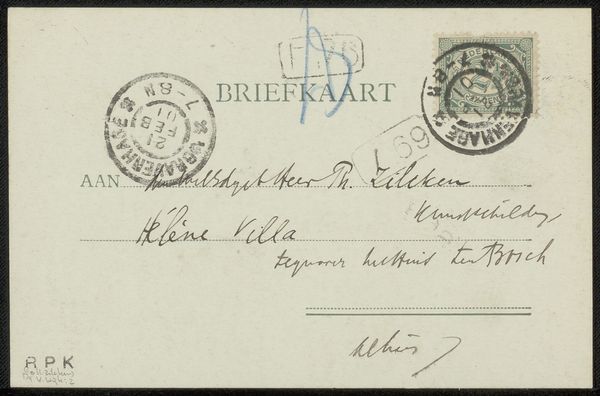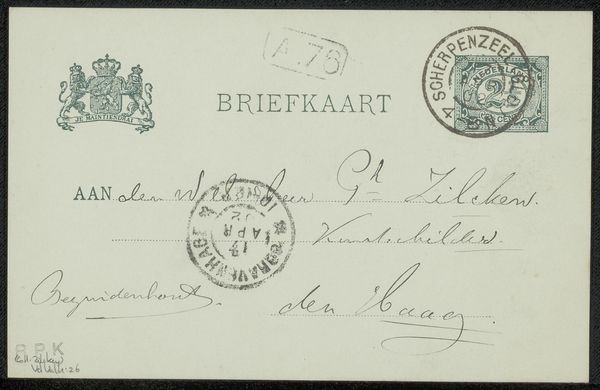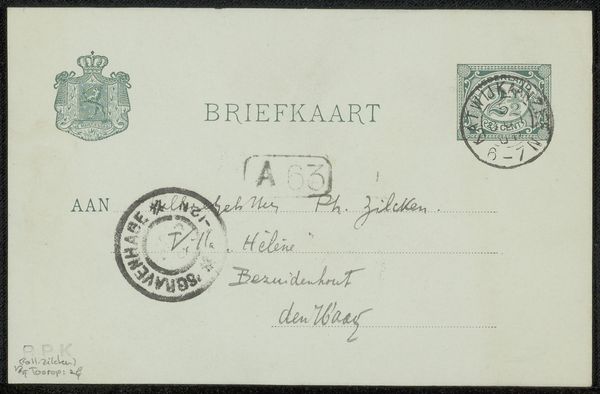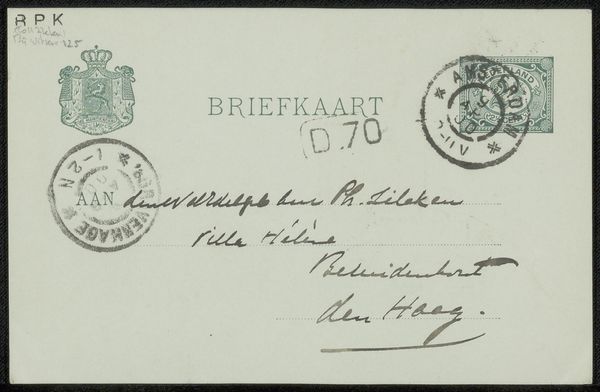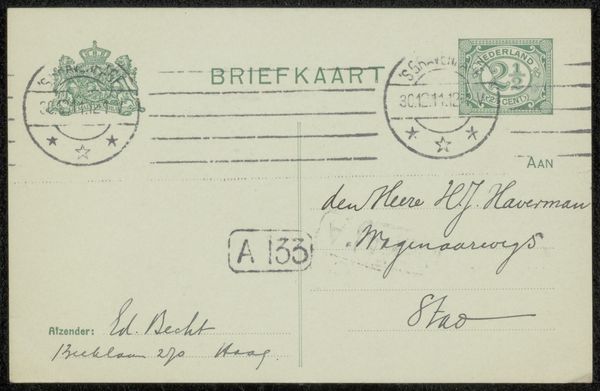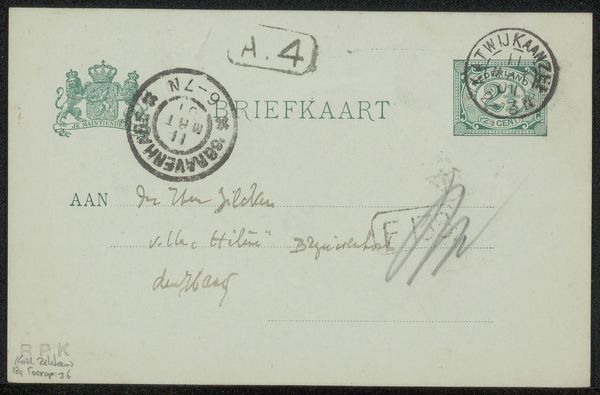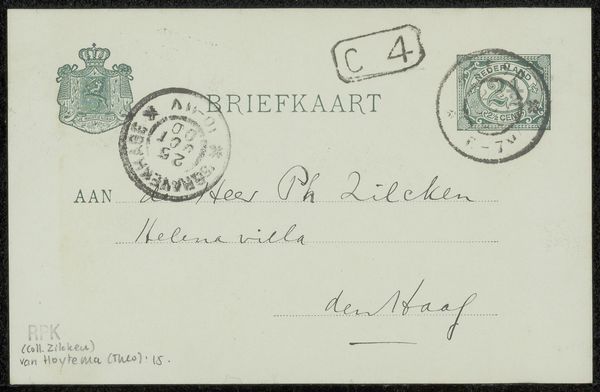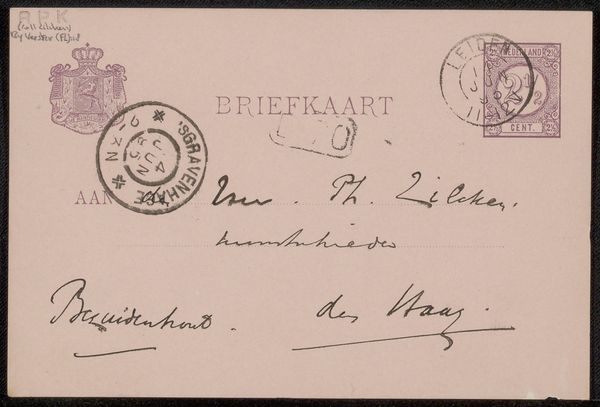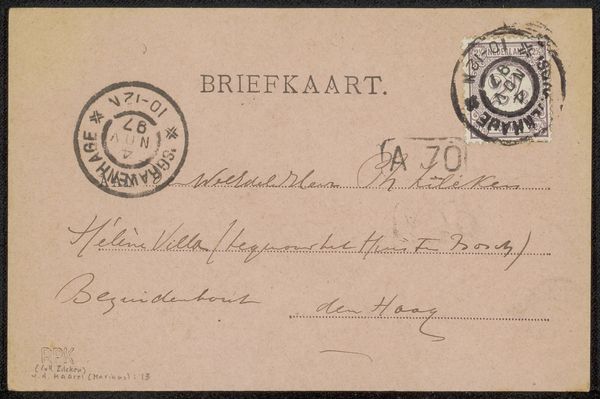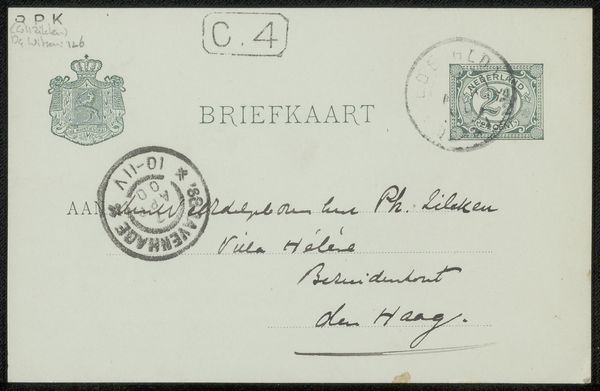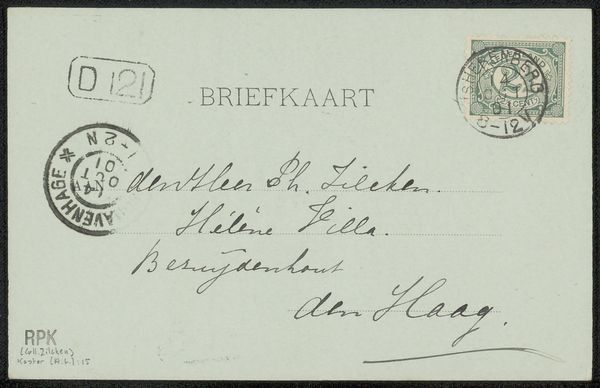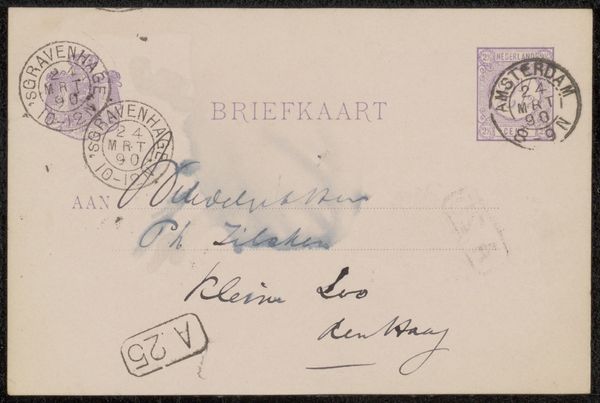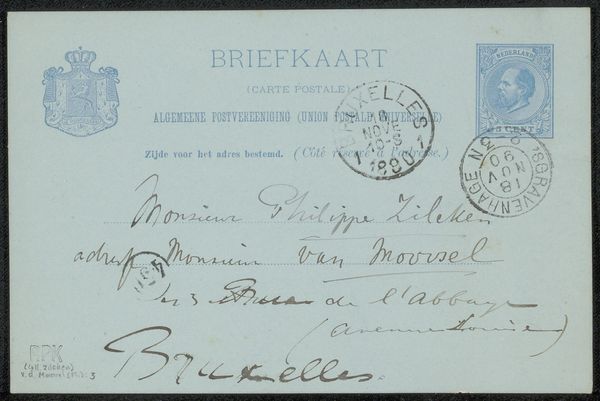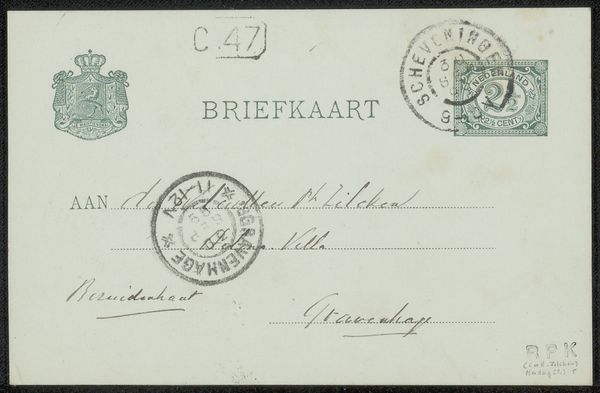
Copyright: Rijks Museum: Open Domain
Curator: This delicate piece, "Briefkaart aan Philip Zilcken," was penned by Carel Nicolaas Storm van 's-Gravesande. The work is before 1922, a charming example of intimacy through the everyday. It is a simple drawing done with pen and ink on paper, demonstrating a specific moment. Editor: Its ephemerality immediately strikes me. The washed-out ink, the fragile paper stock – everything contributes to this quiet, almost whispered impression. There’s a vulnerability to the materials, the handwriting itself is a window. Curator: Absolutely, there’s a profound sense of temporal vulnerability. As a simple everyday correspondence becomes a work of art over a century. The artist knew Philip Zilcken as he inscribes, “Aan Monsieur Ph. Zilcken”. It implies familiarity and respect between colleagues. Editor: And look at how the linear elements – the handwritten address, the printed "BRIEFKAART" text – intersect with the postal markings and stamps. It is interesting to observe the deliberate act of mark-making as layers on a support. The contrast of careful flourish with machine stamp! Curator: Yes, it speaks to a sense of societal connection. It demonstrates intimacy but also echoes other images that transmit societal structures through commonplace exchanges. You will note also the stamp on the opposite side: the heraldry depicted through symbolism implies continuity, and how values carry. Editor: Indeed, it’s these textural and formal juxtapositions that elevate the work. We could read the postal stamps almost as visual interruptions, even aggressive impositions, upon the fluid cursive handwriting. Yet they're all integral to the object's function, and eventual transformation into an art object. Curator: In essence, this is an attempt to find larger meaning. What begins as a brief postcard to someone who is like a colleague eventually can be looked back upon and represent history itself. The fact that this artwork today hangs in Rijksmuseum is the final proof. Editor: A fittingly diminutive gesture, really – a postcard's innate modesty almost mirrors the emotional reserve one might expect in that period, and this object offers itself for contemplation to us, many years after the hands which held it are gone.
Comments
No comments
Be the first to comment and join the conversation on the ultimate creative platform.
